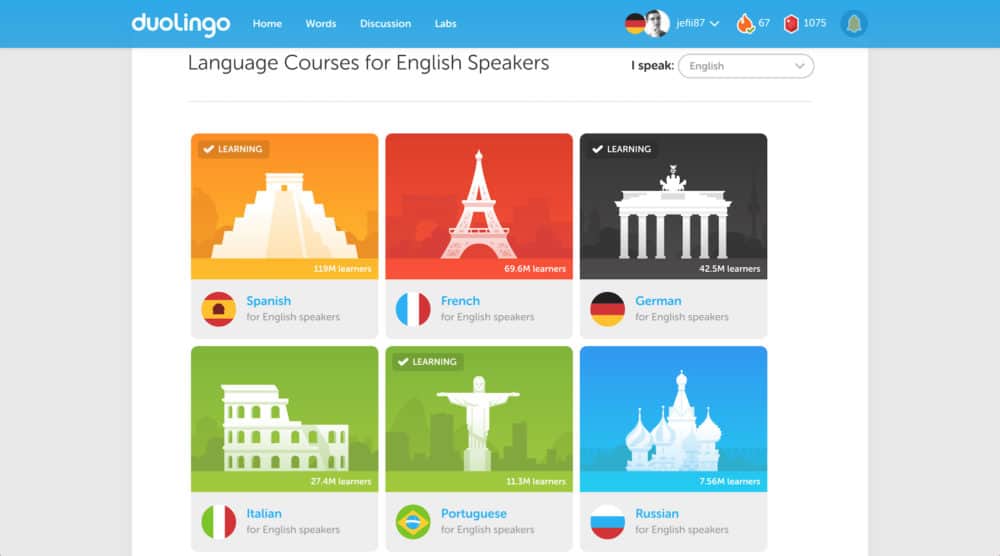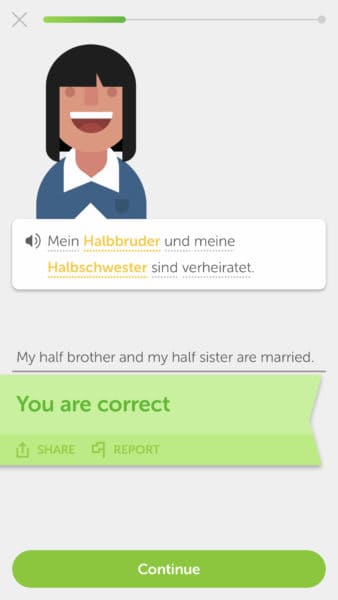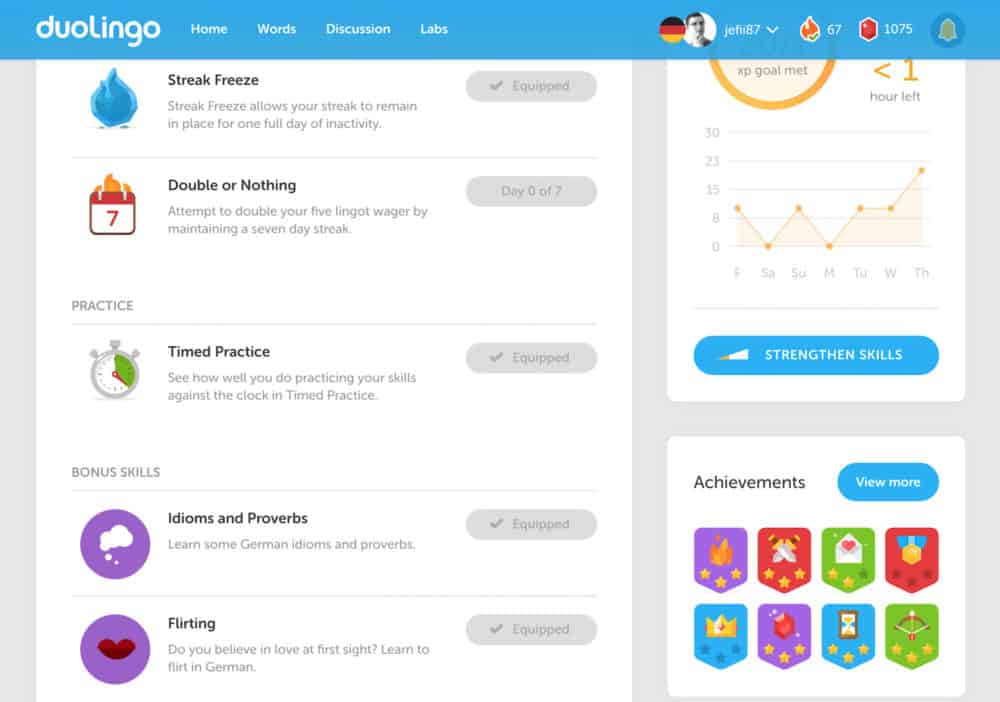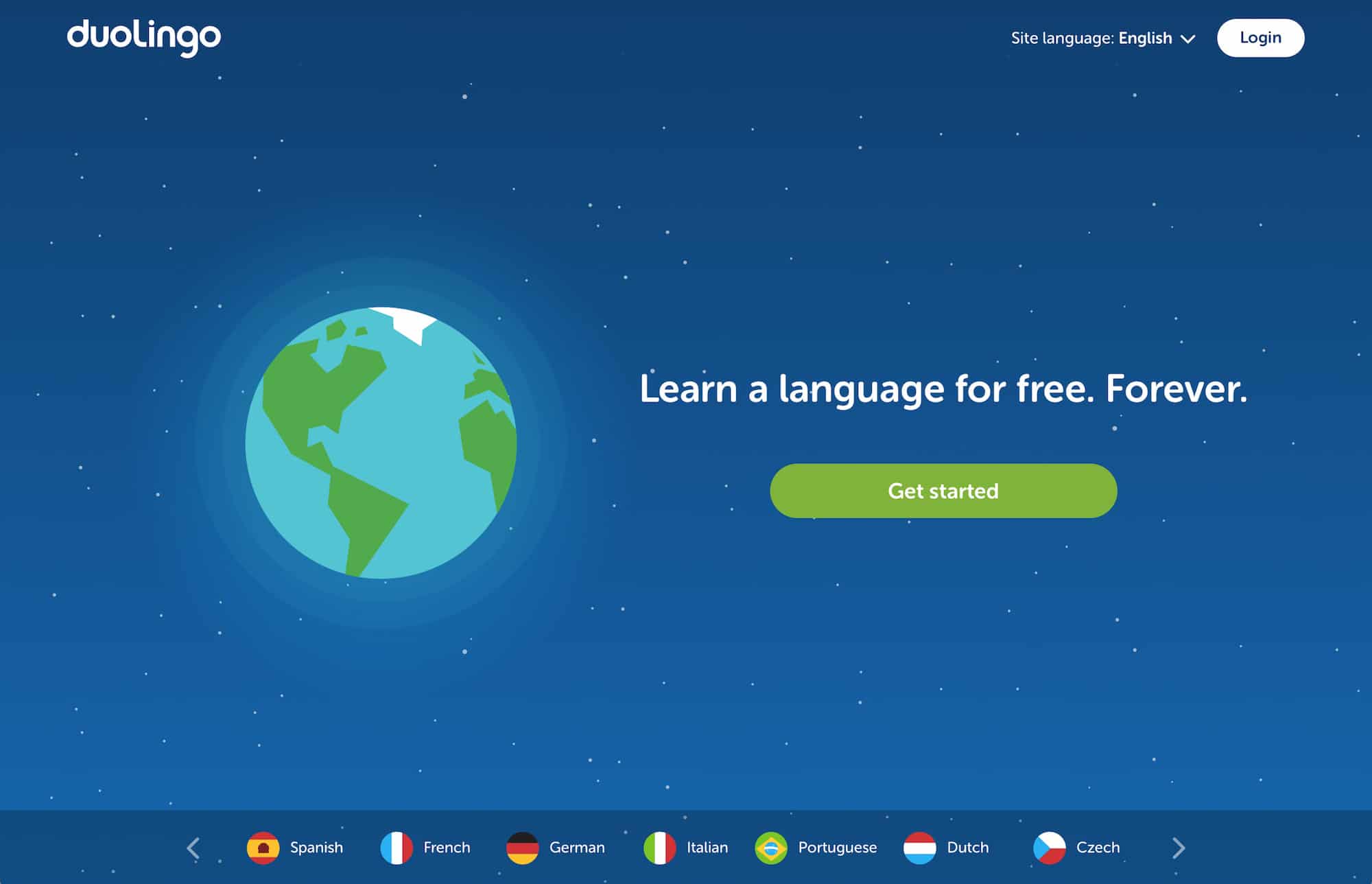How Good Is Duolingo for Travelers?
We may earn a commission from purchases you make after clicking links on this site. Learn more.With all the apps and auto-translators on the market promising to break down the language barrier when you travel, how does “the world’s most popular way to learn a language” stack up?
I’ve been using Duolingo for years now, having completed the Spanish and German lessons and dabbled in Portuguese, and I’m here to review just how well it works for travelers.
Gamified Language Learning
For the uninitiated, Duolingo is a freemium app available for iOS and Android, as well as a stand-alone website designed to gamify language acquisition. You start your path learning a new language by going through modules in a “tree,” that are like different levels in a video game.
You start by making an account through the app, and selecting a language. All of the most common languages are available: Spanish, French, German, Italian, Portuguese, Russian, and many others.

The tree starts off with basic words and phrases, increasing in difficulty as you make your way through the tree. Along the way, you earn badges, lingots (virtual game money), and level up as you gain experience points. It’s free and addictive…but is it effective?
A big sell for Duolingo is that each lesson only takes about five minutes to complete, which is perfect for the inevitable downtime you have when traveling. Waiting in line for coffee? Do a Duolingo lesson. Bus running late? Do another one.
You get rewarded for consistent usage, earning extra points for every ten days you maintain your streak. These points can be redeemed for unlocking bonus modules, among other things.
Each language tree contains around 330 lessons, so you’ll need almost a year to complete it if you’re only doing one lesson a day. But what does finishing the tree get you? Well, according to a study by Duolingo it takes between 26 and 49 hours of study with Duolingo to cover the material of a first college semester in Spanish.
This should mean studying any other language of similar complexity with Duolingo for that amount of time would yield similar results, considering the course structure is the same for most languages on the app.
That’s not bad for a free course, but how does it translate to real-world use?
Fluency With Duolingo?
Let’s start with the bad news. Learning a language with Duolingo alone will not make you fluent. Even if you simply define fluency as being able to comfortably communicate your needs, Duolingo is insufficient. Ignore the app’s estimate of how fluent you are. It boggles my mind as to why this is even a feature.
The problem is that the app doesn’t give enough practice actually speaking the language to have it flow comfortably off your tongue. There are some activities in the modules that have you repeat phrases you hear into the microphone on your phone or computer, but the threshold for accuracy is incredibly low.
If you want to become fluent, you’ll definitely need to supplement your studies with something else. Listening to podcasts in your target language can help improve your listening skills, but something that involves chatting one-on-one with a native speaker is ideal for real communication.
Getting More Than You Pay For

The good news about Duolingo is that it will teach you a ton of useful vocabulary, which serves as a solid basis for ongoing practice of your target language. You’ll learn at least a dozen useful phrases, as well as plenty of not-so-useful ones (for examples, check out the “Shit Duolingo Says” subreddit.)
The gamification of language acquisition is excellent — if only everything was taught this way. To this day I still find myself reaching for my phone to “play” Duolingo, so I can keep earning virtual money for virtual things I don’t need.
The developers of the app have certainly figured out how to keep you coming back for more lessons, which is great, because getting anywhere with a new language requires diligence and consistency.
Get regular updates from the world of travel tech and remote work
News, reviews, recommendations and more, from here and around the web
Is it Worth Your Time?

While you should be able to pass a college 101-level class in your target language with the knowledge gained from Duolingo, you’ll need considerably more than the app offers to be able to fully express yourself.
That said, remember that language learning is an act of friendship. Locals in the places you visit will appreciate your efforts to talk to them in their native tongue, no matter how well you do.
Even preparing a few simple phrases before your visit will go a long way towards gaining the respect of the people you meet. You’ll be much more likely to make lasting relationships, and see the country you’re visiting from a local’s point of view. So keep practicing… and for that, at least, Duolingo is a good place to start.
¡Hasta luego!
All screenshots by the author from duolingo.com.








Hi Jim, is there an app that matches DuoLingo’s gamification but focuses on travel terminology? I’ve used it for years to dabble my toes when I travel, yet it’s frustrating that I’ve learned words like machine and tree in Czech or Portuguese and not seen thank you or bathroom! Thanks in advance!